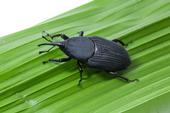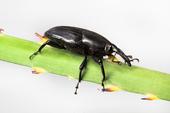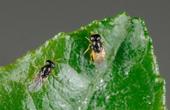- Author: Saoimanu Sope

More than 20,000 palms in the region have been killed by South American palm weevil
The swaying palm trees that line San Diego's streets might not be swaying much longer due to a pest that is infecting many of these iconic trees and making its way across Southern California.
The South American palm weevil (SAPW), also referred to as the American palm weevil and black palm weevil, was first detected in San Diego County in 2011, with breeding populations found in a Canary Island date palm in San Ysidro in 2015. According to industry experts, more than 20,000 palms in the region have been killed by SAPW thus far.
While SAPW can attack a variety...
- Author: Jeannette E. Warnert

The gypsy moth, an interloper from Europe and Asia, is threatening California's majestic oaks in Ventura County.
Invasive desert knapweed, which comes from Africa, has made its first North American appearance in in California's Anza-Borrego Desert, where it has started to crowd out native plants.
Asian citrus psyllids are slowly spreading the devastating huanglongbing disease in Southern California citrus.
River rats from South America, called nutrias, are munching voraciously on wetland plants in some areas of Stanislaus, Merced and Fresno counties.
These are just a few of the insects, weeds, animals and diseases that have entered the state of California from elsewhere on the globe, causing...
- Author: Sean Nealon

Representatives from the date and ornamental palm industries, arborists and pest managers, parks and recreation officials, and home owners are uniting behind a University of California, Riverside initiative to slow the spread of the South American palm weevil, a palm tree-killing insect that has established in San Diego County.
“Everyone recognizes the threat and agrees it is significant,” said Mark Hoddle, UC Cooperative Extension specialist in biological control based at UC Riverside.
However, Hoddle said, action is hampered significantly by a lack of financial support at the state and federal level for research to answer questions about the distribution...
- Author: Jeannette E. Warnert

The battle against Asian citrus psyllid (ACP) is continuing in California on many fronts, motivated by the insect's ability to spread huanglongbing (HLB), the worst citrus disease in the world. HLB has been found in only one isolated tree in California, and everybody who enjoys California citrus wants it to stay that way.
Farmers are diligently treating orchards where the pest has been found, county ag commissioners are monitoring traps to keep tabs on ACP movement, and UC researchers are looking into a wide variety of novel techniques to disarm ACP and the disease. In December, UC Cooperative Extension biological control specialist



